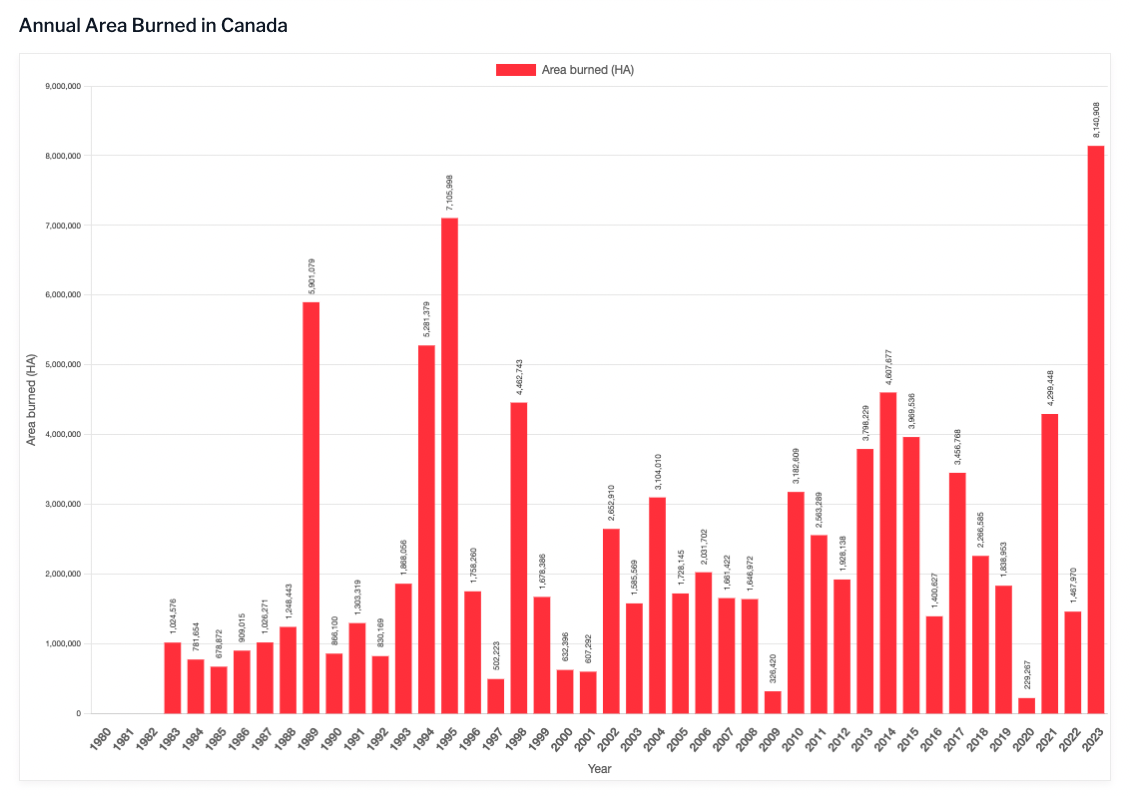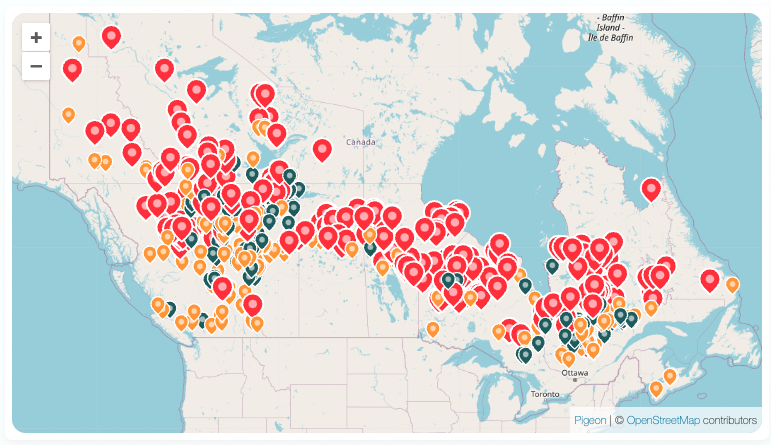Well, its June 30th and Canada officially has its worst wildfire SEASON on record. Year to date, the seemingly endless number of fires that started burning across Canada this spring have collectively scorched 20+ Million acres (and counting). The constant fire activity has created hazardous air quality across parts of the US and even reached across the Atlantic to Europe.
According to experts, the increase in activity this year can be attributed to rising temperatures, prolonged droughts, and changing precipitation patterns. The combination has created a perfect storm for fire outbreaks. Despite the high latitude, Canada’s climate has warmed in recent years, creating drier conditions, and turned vast stretches of forests into tinderboxes. Consequently, wildfires have become larger, more aggressive, and harder to control, posing an escalating threat to both urban and rural areas. Canada Wildfires haven’t seen this much coverage since the Fort McMurray fire in 2016.

As of June 30, 2023 is already tops since 1980 in Annual Area Burned across Canada. (Source: https://ciffc.net/statistics)
Canada Smoke a Hot Topic
While populated areas have been effected and evacuations common, here in the US, the perpetual smoke in the Northern States has been the main topic. In both Canada and the US, the influx of smoke and hazardous air quality has affected many areas for weeks. Poor air quality affects overall well-being, poses health risks, and aggravates respiratory conditions. Extensive media coverage and viral pictures across major cities in the US and even Europe have made smoke a hot topic. This season’s epic wildfire activity have brought stations to use segments such as a ‘smoke tracker’ and ‘air quality alerts’ to keep the populous informed. With many of the fires burning uncontrolled in forested areas, the resolution for the countries’ smoke issues is also hazy.

Smoke from Canada wildfires has reached Europe (Credit: NPR, Nasa)





3 Comments